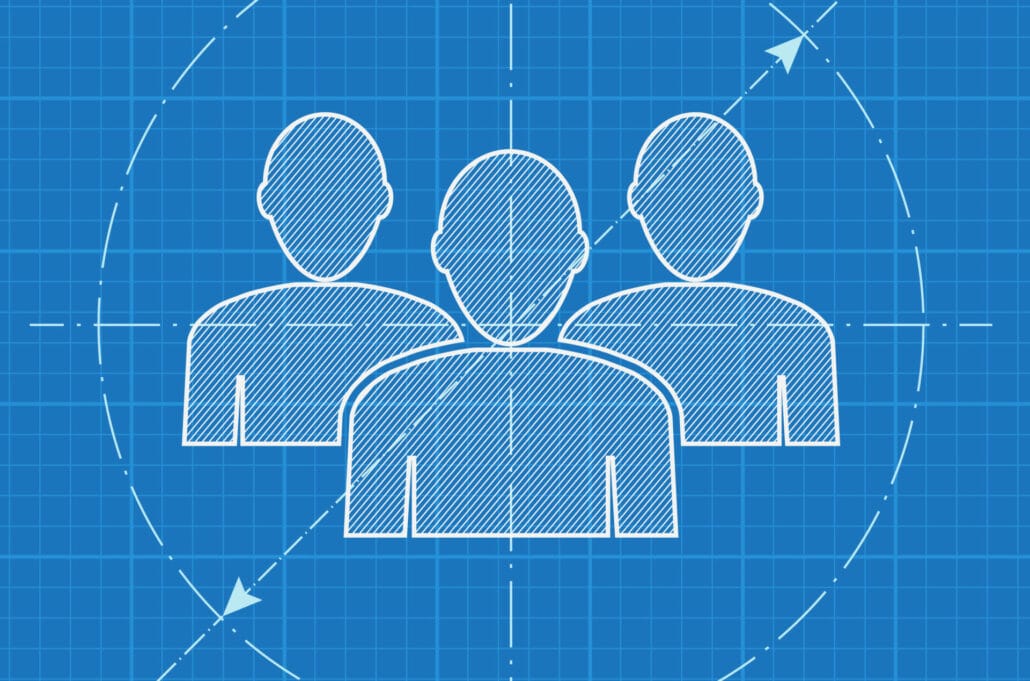Crafting an onboarding plan is essential to ensure new employees quickly become productive, engaged members of your team. If you wish to create an onboarding strategy that streamlines an efficient and welcoming transition for your new hires, you’re in the right place. This article provides practical steps and essential information to construct an onboarding blueprint that aligns with your company’s needs and culture, enhances job satisfaction, and fosters a supportive environment from the first day. It provides clear guidance on timelines, roles, personalized approaches, and measuring the success of your employee onboarding process.
Key Takeaways
- Onboarding is essential for new employee integration and retention, aiming to align each new hire with the company’s culture and expectations, providing thorough training, and extending over 3 to 6 months for optimal acclimation.
- Onboarding should be role-specific and tailored to different positions, with strategies like pre-boarding and an onboarding buddy system in place to foster connectivity, especially for remote staff.
- Utilizing onboarding software and regular feedback mechanisms is essential for streamlining the process, measuring its effectiveness, and ensuring continuous improvement for a successful workforce integration.
Unlocking the Essentials of an Onboarding Plan

Employee onboarding, also known as the employee onboarding process, is where new hires get familiar with the organization, its people, and its culture. It’s not just a formality; a well-structured onboarding plan is crucial for integrating each new employee into the company’s ecosystem, laying the groundwork for their success and retention within the organization. This plan is an investment in both the company’s people and the company itself. It sets the stage for developing successful and long-term employees.
While this article does not specifically cover onboarding plans for remote workers, developing a plan for employees beginning a work from home arrangement is just as essential.
A strong employee onboarding process has several benefits, including:
- A boost in productivity, job satisfaction, and retention rates by as much as 82%
- Alignment of job descriptions with the onboarding plan to accurately reflect the role and reduce the risk of new employees leaving the company early
- A path to improved new hire retention, enhanced performance, and reduced recruitment costs for the company
By focusing on your new employee onboarding process, you’ll maximize these benefits for your company.
Effective employee onboarding includes:
- Communicating clearly with a new hire from the moment they accept the offer
- Ensuring they are well-informed about the company’s culture
- Setting clear expectations early on
- Determining what new hires need to know, such as workplace culture, team structure, and feedback processes
- Providing essential information and training to accelerate a new hire’s ability to perform their roles
This equips new hires with the necessary tools and knowledge from the outset.
The onboarding process should extend anywhere from three to six months, giving new employees ample time to acclimate and deepen their understanding of the company and its teams. Integrating HR onboarding software into the plan helps provide structure. This reduces anxiety for new hires, facilitating a clear and guided experience from the start. Personalizing the onboarding process meets individual needs from the beginning and makes each new hire feel valued and supported, a factor in improving overall employee retention.
Effective onboarding includes much more than the completion of new hire paperwork. The process aids in acclimating new hires to their roles and company standards, leading to improved job performance and operational efficiency. It’s clear that a comprehensive onboarding process is a key component for achieving a strong, engaged, and productive workforce.
Crafting Your Onboarding Blueprint: A Step-by-Step Approach

Creating an effective new hire onboarding process involves a well-planned timeline and clear communication strategies. Implementing and enforcing checklists for both onboarding and training ensures everyone involved is held accountable. A breakdown in responsibilities anywhere in the chain can cause issues later that might not be fixable. Careful planning and follow up ensures the process goes smoothly and fulfills its goals.
The process should span at least six months to a year to ensure new hires gradually ramp up to full productivity. Implementing a 90-day plan offers each new hire the necessary time to:
- Learn about the workplace culture
- Understand their role and responsibilities
- Do their part to maintain a safe work environment
- Build relationships with colleagues
- Receive feedback and support
This gradual approach allows new hires to integrate into the company smoothly, gain confidence, and become productive members of the team.
Before the new hire’s first day, logistics such as technology setup, office access, and initial training sessions need to be arranged. Be sure to consult with hiring manager(s) to align the onboarding experience with the specific expectations and goals of the department. Clear and frequent communication throughout the onboarding period ensures expectations are set, progress is tracked, and new hires have a reliable point of contact.
A structured onboarding approach guarantees that all new employees receive a consistent experience and access to necessary information. Regular data analysis of onboarding activities helps identify and resolve issues, thus improving the overall onboarding experience. Now, let’s break down the onboarding blueprint into key phases: pre-onboarding, the first day, and the initial weeks.
Preparing Before Day One: Pre-Onboarding Strategies
Pre-onboarding sets expectations and provides necessary information before the new employee’s first day, engaging them before they start and helping them feel more at ease.
Welcome emails should include details about the start date, parking, dress code, first-day schedule, and other important information needed before the first day. IT readiness is imperative to avoid wasted time, ensuring new employees have the hardware, software, and access they need on their first day.
Automated HR systems can help deliver electronic documents efficiently and consistently provide a seamless introduction to the company’s culture and values during pre-onboarding. By engaging new hires early and ensuring they are well-prepared, you can significantly reduce their anxiety and make their transition smoother.
The First Day: Making a Lasting Impression
The first day should be memorable and welcoming. A new hire should be greeted with:
- A clean, comfortable workspace equipped with a desk, chair, and company-branded items to create a supportive and welcoming first day
- Orientations and tours conducted by knowledgeable and positive employees
- Sharing of company history and values
- Accessibility to resources that enable the new hire to feel informed and equipped.
Consider bringing in donuts to celebrate new employees on their first day, and arrange a team lunch to meet team members on a more informal basis. Or add a special touch to their pre-arranged workspace with a plant or flowers. These small gestures can go a long way in making a lasting impression.
In a factory-type environment, an employee’s first day may look a little different, but should still contain key elements:
- Familiarization with the employee’s work area, restrooms, and breakroom
- Introductions to the primary individuals important for them to perform their job and whom they should consult with questions
- Information on clocking in and out, start and stop times, and breaks
To make the first day experience truly special, new hires should receive personalized attention, small gifts or swag, and opportunities for socializing. Even for factory workers, this type of attention creates a positive influence on their perceived value to the company. Creating opportunities for new hires to meet their coworkers, including cross-functional partners, with structured time for introductions and interaction fosters initial team bonding and network building.
The Initial Weeks: Building Foundations
Communicating job roles, performance goals, workplace culture, and expectations clearly to the new employee is crucial throughout the initial weeks of the onboarding process. It is even more important for remote employees to have a clear understanding of their responsibilities. Establish a structured onboarding timeline with regular check-ins at 30-, 60-, and 90-day intervals to discuss adapting to roles and setting the expectation for full transition at the end of the period.
New hires should demonstrate training completion and have a solid understanding of company fundamentals by the end of the second month, with specific role-related goals set with the help of HR professionals. Ongoing check-ins and the support offered by mentors and colleagues are essential to foster employee retention, job satisfaction, and provide suggestions for networking within the company.
Unstructured time during the onboarding period allows new employees to process the wealth of new information at their own pace.
The Role of Onboarding Buddies and Mentors

Mentors provide a space for low-pressure discussions with new hires and contribute to employee retention. As an onboarding buddy, an experienced employee guides the new hire during their transition, making them feel welcomed and reducing feelings of isolation. This system fosters personal confidence and improves early job performance for new hires.
Buddies enhance organizational communication and provide a comfortable environment for questions and ideas exchange. Appointed buddies should be trained to listen for issues the new employee might be experiencing and work to resolve them. Scheduled meetings with mentors, team members, and cross-functional partners build important connections for new hires. Regular interactions between buddies and new hires are encouraged to establish trust and guidance.
For remote employees, pairing them with buddies is especially beneficial as it helps them receive essential support and guidance. A feedback mechanism to monitor the Buddy System’s effectiveness is important for continuous improvement. Overall, onboarding buddies and mentors play a crucial role in creating a psychologically safe and supportive environment for new hires.
Integrating Onboarding With Company Culture and Values

From the employee’s first day, introduce core company values and set standards for diversity, inclusion, and belonging, to cultivate a positive company culture. Regular training modules, including real-life scenarios, help new employees internalize company values and understand their roles within the company. Implementing onboarding software that clearly presents company values is optimal. These strategies can be adapted for cultural integration of remote employees, ensuring alignment with the organization’s culture.
Highlighting employee stories and practices, such as Slack’s transparent communication, shows the active practice of company values. By integrating the company’s culture and values into the onboarding process, you ensure new hires not only understand but also embody these principles in their daily work.
Tailoring Onboarding for Different Roles
Onboarding should be adapted to the complexity and responsibilities of each role, taking into consideration the unique competencies, experiences, and technical skills required. Templates tailored for specific roles such as IT, developers, manufacturing, and sales are available to streamline the onboarding process and cater to the unique needs of these positions.
For example, sales representatives are specifically trained on:
- Products
- Marketing
- Leadership
- Sales
During their onboarding, employees should receive a clear job description outlining their job duties and job responsibilities, as well as their performance expectations, to ensure a comprehensive understanding of their new hire’s role and responsibilities.
To assimilate institutional knowledge, peer learning from seasoned team members is leveraged during the sales team onboarding. After the initial month, a significant focus of the onboarding tasks is placed on providing role-specific training to the new hires. Let’s explore how onboarding can be tailored for leadership positions and technical roles.
Customizing for Leadership Positions
Onboarding managers is important because management requires strong soft skills and their performance has a high impact on employee satisfaction and engagement. Leadership roles necessitate a focus on leadership skills and strategic orientation during the onboarding process to prepare them for the responsibilities they will assume.
An executive onboarding template can be personalized with input from the executive for a tailored onboarding experience that caters to individual goals and skills. By customizing the onboarding process for leadership positions, you ensure that new leaders are well-equipped to guide their teams effectively.
Specialized Onboarding for Technical Roles
Developing role-specific training modules is essential for effectively onboarding individuals in technical roles, such as software development. Some strategies to consider include:
- Provide focused group discussions about current industry trends
- Offer hands-on training sessions to familiarize new employees with the company’s architectures, platforms, tools, and access to codebases
- Provide resources and support for understanding legacy code
These strategies can significantly benefit onboarding employees in technical fields and help them quickly become productive members of the team.
Developers often encounter difficulties due to poor process documentation. This underscores the importance of training to ensure thorough and accessible documentation. By addressing these challenges and providing specialized training, you can ensure a smooth transition for technical hires in software development.
Measuring Onboarding Success: Metrics and Feedback
Time to Productivity, the cost to achieve Optimum Productivity Level, the New Hire Retention Threshold, and New Hire Retention Rate per Manager, are key metrics to measure the effectiveness of the onboarding process. New hire retention rate per manager is also measured to gauge individual managers’ effectiveness in the onboarding process. Conducting onboarding satisfaction surveys at set intervals, such as one month, three months, six months, and a year, helps track new hire satisfaction over time.
An onboarding feedback form template can be utilized to systematically gather insights from new employees about the onboarding process. Informal feedback can be obtained through focus groups or interviews for qualitative insights, complementing structured feedback mechanisms. 360-degree feedback is used to collect a comprehensive view of the onboarding process from various perspectives, including peers and managers.
Continuous assessment and improvement are essential to tailoring the onboarding plan to company needs and boosting its effectiveness. Using onboarding software can reduce employee turnover costs and support employee engagement by providing necessary resources for growth. An effective onboarding process proven to increase employee retention rates signifies the importance of measuring and improving onboarding strategies.
Leveraging Onboarding Software for Efficiency
Onboarding software offers several benefits for HR professionals and new employees, including:
- Automating administrative tasks, freeing up time for more strategic activities
- Centralizing important elements, making the transition smoother and more structured
- Systematic management of necessary information and documentation, ensuring workplace compliance
By utilizing onboarding software, HR professionals can increase productivity and create a more efficient onboarding process.
Automating tasks within HR workflows contributes to increased new hire retention rates. Employee onboarding software offers a more efficient onboarding experience, automating processes, and saving time for both HR and managers. By leveraging these tools, you can streamline the entire onboarding process and ensure a seamless transition for new hires.
Navigating Remote Onboarding Challenges

Remote onboarding should immerse new hires in company culture, create a strong community, and provide support, while overcoming virtual collaboration hurdles and the lack of spontaneous opportunities. Like in-house workers, engage new remote hires before their first day through welcome communications and preparedness measures to instill a sense of value and team inclusion from the outset.
To foster connection and a sense of community among remote workers, consider implementing the following strategies:
- Conduct virtual introductions and team-building activities to help remote employees get to know each other.
- Implement a structured onboarding protocol for remote employees, including pre-onboarding, onboarding, and training.
- Support remote employees with frequent communication and check-ins to ensure they feel included and supported from day one.
By addressing these challenges, you can help remote employees feel valued and included in the workplace culture.
Onboarding Checklist Template: Your Roadmap to Success
An onboarding checklist template is a vital tool for ensuring a comprehensive and organized onboarding process. Available for download from various websites, onboarding checklist templates provide a structured guide for HR teams and hiring managers to complete all critical onboarding tasks methodically. Templates, like a 90-day plan, offer customization to match specific company timelines and planning needs, making them adaptable for any onboarding duration. Reviewing several templates can help you pick and choose the right steps that make sense for your own company.
Structured onboarding programs facilitate successful new employee integration, with detailed lists of activities and assigned responsibilities to track the onboarding process progress. Digital platforms, such as Smartsheet, enhance the onboarding process by offering advanced features like real-time collaboration and process automation within the templates. By utilizing an onboarding checklist template, you can ensure that no step is missed, providing a smooth and efficient onboarding experience.
Summary
Creating a seamless onboarding plan is essential for fostering new hire success, engagement, and retention. From preboarding strategies to making a memorable first day and building strong foundations in the initial weeks, each step is crucial. The role of onboarding buddies and mentors cannot be overstated, as they provide essential support and guidance. Integrating company culture and values into the onboarding process ensures alignment and fosters a positive work environment.
Adapting the onboarding process to different roles, measuring success through metrics and feedback, and leveraging onboarding software are all key components of a successful onboarding program. Addressing remote onboarding challenges ensures that all employees, regardless of their location, feel valued and included. With the help of an onboarding checklist template, you can ensure that every aspect of the onboarding process is covered, leading to a positive and efficient onboarding experience. Ready to transform your onboarding process? Start crafting your seamless onboarding plan today!
Frequently Asked Questions
How long should onboarding last?
Onboarding should typically last anywhere from three to six months, allowing new employees enough time to get used to the company and its various aspects.
What is the role of an onboarding buddy?
The role of an onboarding buddy is to guide new hires during their transition, making them feel welcomed and reducing feelings of isolation. This helps them integrate into the company more easily.
How can onboarding software improve the process?
Onboarding software can improve the onboarding process by streamlining and centralizing important elements, making the experience smoother and more structured for new employees. Additionally, it helps HR professionals by automating administrative tasks and ensuring compliance.
What are some key metrics to measure onboarding success?
Key metrics to measure onboarding success include time to productivity, cost to reach optimum productivity level, new hire retention threshold, and new hire retention rate per manager. These metrics can help you assess the effectiveness of your onboarding process and make improvements where needed.
How can onboarding be tailored for different roles?
Tailoring onboarding for different roles involves using templates specific to each position, like IT, developers, manufacturing, or sales, to address the unique needs and competencies of each role. This ensures onboarding is adapted to the complexity and responsibilities of each position.


